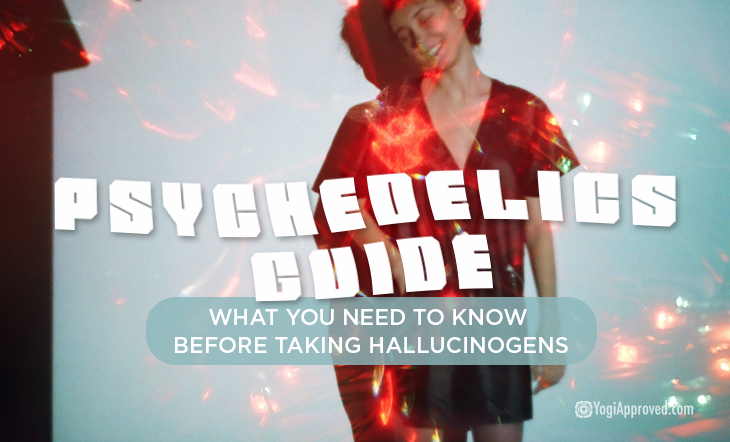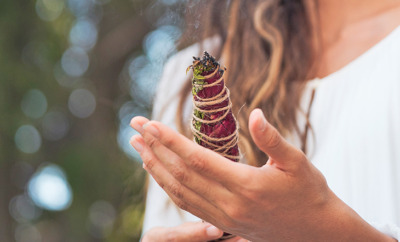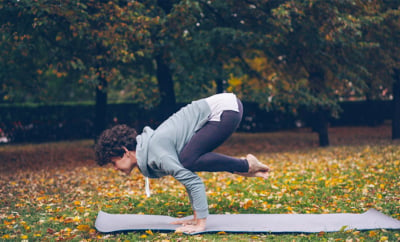Psychedelics Guide: What You Need to Know Before Taking Hallucinogens

psychedelics guide featured
Humans have been consuming psychedelics for thousands of years. Psychedelics – often referred to as hallucinogens – are drugs that produce altered states of consciousness and/or hallucinations. The active chemicals in psychedelic substances such as cannabis, psilocybin mushrooms, LSD (acid) and MDMA (molly) are derived from plants and were referred to by ancient cultures as plant teachers or plant medicines.
DMT is referred to as the “spirit molecule” and is the active component of many psychedelic substances such as ayahuasca – a plant medicine used by shamans in South America.
DMT is naturally produced by the body during sleep and meditation – meaning it is not necessary to consume a psychedelic substance to have a psychedelic experience . . .
Psychedelic experiences can help us to confront certain truths about ourselves and this is why some people claim that these experiences have changed their entire perspective on life.
However it’s important to know that these experiences are not all rainbows and unicorns – which is why psychedelics should not be used without knowing what you’re getting into. And contrary to how many people view hallucinogens, they should be approached with mindfulness, research, and understanding.
Psychedelics 101: History, Uses, Facts
Psychedelics can be the following: LSD, psilocybin mushrooms, mescaline (the active component of peyote), salvia and DMT (usually found in ayahuasca). They’ve been used for thousands of years for therapeutic use by shamans, witch doctors and more recently by those seeking spiritual growth.
Terence McKenna – author, lecturer, and ethnobotanist – theorized that mankind actually evolved from apes because of these substances – this formed the basis of his “Stoned Ape Theory.”
While Terence advocated the use of psychedelics for the expansion of consciousness, he was also adamant that these were plant teachers and medicines rather than recreational substances to be used for fun. This distinction is key when you’re considering taking psychedelics.
Aldous Huxley, author of Brave New World, wrote a book on psychedelics in 1954 called The Doors of Perception. This book – revolutionary for its time – offered the suggestion that psychedelics (LSD in particular) could provide a new way of looking at the world.
Through this new lens we can gain different perspectives on our lives and see ourselves from a universal vantage point, rather than the first-person view we usually adopt in our everyday lives.
Consider These 5 Things Before Taking Psychedelics:
This brief history of psychedelics in our society lays the foundation for our view of them in our lives. Before we move on, it’s important to note that this article is not advocating for the use of psychedelic drugs for fun or recreation. If you’re looking for education and perspective, that’s what you’ll find here.
1. Intention Is Everything
Consuming plant medicines for recreational purposes isn’t recommended as they can bring profound messages that the user may not be prepared for. This is why it’s important to have an intention in mind – this could be in the form of working through some past trauma, emotional blocks or seeking answers that can only be found within.
2. Start Off Small
There’s no need to dive into the deep end head first, so try microdosing first. Microdosing is when a small amount of the substance is consumed to familiarize the user with the effects before taking what’s referred to as a “breakthrough dose.”
Microdosing can be a great way to understand what to expect from a psychedelic experience instead of being completely immersed in a 6-12 hour experience. You heard right – these ‘trips’ can last for many hours, which is another reason why it’s so important to approach these drugs slowly, with caution and understanding.
3. Mindset and Physical Setting Are Important
The mindset of the user before they consume psychedelics will determine what kind of experience they will have. This ties back to setting an intention (see #1). For example, if someone is in a bad place in their life, they will have an experience that reflects this, which is where many “bad trips” come from.
The physical setting is equally important – this should be around trustworthy people (and not a big crowd) in a relaxed and comfortable environment. Hallucinogens can put us in vulnerable states, which is why it’s imperative to ensure a calm mindset and safe setting.
4. Conscious Breathwork Is Key
“Bad trips” can happen as a result of the user being unprepared for the experience and can present themselves in a variety of ways – nausea, feelings of fear, and malevolent hallucinations. This is another important reason and reminder why psychedelics should not be approached lightly.
If this happens, it’s important to acknowledge that the experience has something of value to be learned, but also that breathwork can help reduce the severity and duration of the negative effects. Being proficient in meditation and conscious breathing can help greatly. Focusing all attention on the breath has a calming effect on the body and will help to settle any anxiety that can arise.
Want to learn more about conscious breathing techniques? Check out this Guided Pranayama and Mindfulness Meditation For a Calm and Peaceful Mind
5. Integration After the Fact
Anyone can consume a psychedelic substance and “trip” . . . but the real work begins after the experience. Integrating what was learned from the experience after the fact is part of the personal work. To do this, we must be willing to meditate on what we’ve seen, felt and experienced to understand what it was sent to teach us.
Through this self-reflection, we develop a deeper understanding of ourselves, who we are and what we’re here to do. Without integrating the lessons from a psychedelic experience, we’re using the hallucinogens irresponsibly, which can have detrimental effects on our lives.
Be Informed and Responsible With Psychedelics
It’s important to know that we do not need to take psychedelics to have profound realizations and experiences. Meditation and spiritual practices like mindfulness and even yoga can invite these same lessons into our lives.
Being present with ourselves in meditation reveals much of what has been hidden under the day-to-day things we encounter. Psychedelics are simply a tool that can be used to hack into these states of complete presence – they are not a requirement, just a different method.
Some of us may prefer psychedelics and some of us may prefer to enter these states naturally – the important thing is to find the path we resonate with. And above all, no matter what you choose, choose it with caution, awareness, and understanding.


This Month's Letter
From the Editor
Monthly motivation and food for
thought from our founder.


























